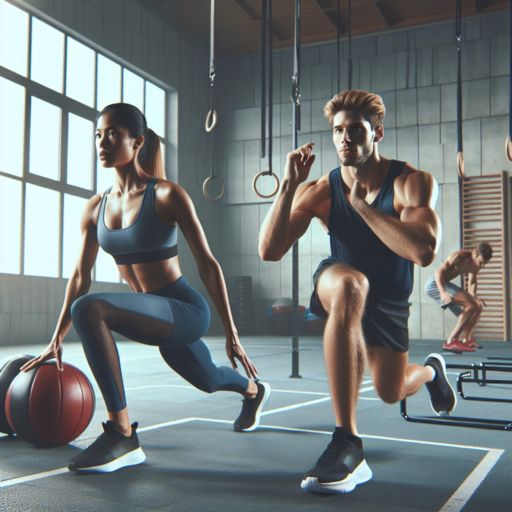Can plyometrics help with running?
Understanding Plyometrics and Its Impact on Running
Plyometrics, often referred to as jump training or plyos, involves exercises that encourage muscles to exert maximum force in short intervals of time, with the goal of increasing power (speed-strength). This form of training is not just about jumping high but also involves quick, explosive movements that can significantly enhance a runner’s performance. By incorporating plyometrics into their training regimen, runners can expect improvements in their running efficiency and speed.
Key Plyometric Exercises for Runners
There are a variety of plyometric exercises tailored specifically towards improving running capabilities. Exercises such as jump squats, box jumps, and bounding are particularly beneficial. These activities focus on strengthening the leg muscles and improve neuromuscular coordination, which are essential for efficient running. By performing these plyometric exercises, runners can develop a stronger push-off power, leading to quicker and more energetic strides.
The Role of Plyometrics in Injury Prevention
Another significant aspect of plyometrics is its potential in reducing the risk of running-related injuries. These exercises enhance the muscles’ ability to absorb shock, which is pivotal in running where the impact with the ground can cause stress to the joints and muscles. Through regular plyometric training, runners can build resilience in their muscles and connective tissues, thereby preventing common injuries such as shin splints and runner’s knee.
No se han encontrado productos.
How often should runners do plyos?
Understanding the optimal frequency for incorporating plyometric training into a runner’s routine is essential for enhancing performance and reducing the risk of injury. Plyometrics, often known as plyos, are exercises that aim to increase power (speed-strength) through rapid, explosive movements. These exercises can significantly benefit runners by improving running economy, speed, and muscle strength.
Establishing a Baseline Frequency: For newcomers to plyometric training, starting with one session per week can help the muscles adapt to the new demands without overstressing them. This approach allows the body time to recover and gradually build resilience to the impact and intensity of plyos. As runners become more accustomed to these exercises, they may consider increasing the frequency to two sessions per week, spaced out to allow for adequate recovery.
It’s essential to listen to your body and adjust the intensity and frequency of plyometric sessions based on your recovery, overall training load, and individual goals. Advanced runners or those with specific speed or performance objectives might find value in integrating more frequent plyo sessions under the guidance of a coach or a trained professional who can tailor the program to their needs without compromising recovery and overall health.
Can I do plyometrics in running shoes?
Certainly, diving into the question of whether you can perform plyometric exercises in running shoes requires an understanding of the unique demands of plyometric activities and the design characteristics of running shoes. Plyometrics, known for their explosive movements such as jumping, bounding, and quick changes in direction, place significant stress on the feet and legs. These high-impact exercises demand footwear that offers ample stability, support, and shock absorption to reduce the risk of injury.
Running shoes, designed primarily for forward motion, emphasize cushioning, comfort, and durability over short distances. While many running shoes possess qualities that can support lower-intensity plyometric exercises, they may lack the necessary stability and lateral support for more advanced plyometric movements. This is due to the running shoe’s construction, which focuses on cushioning the impact of each stride but may not provide the firm support needed for the multidirectional movements found in many plyometric exercises.
Key Aspects to Consider
- Support: The lateral support in running shoes may not suffice for the side-to-side movements in plyometric exercises.
- Cushioning: While cushioning is vital, excessively cushioned running shoes can hinder the necessary quick off-the-ground response during plyometrics.
- Stability: Advanced plyometric moves require a base that offers stability during dynamic movements, which might be lacking in some running shoes.
It’s important to evaluate the specific design and features of your running shoes against the requirements of the plyometric activities you wish to perform. Footwear engineered for cross-training or specific to plyometrics might be better suited for these high-intensity exercises, offering the needed support, stability, and flexibility. Assessing your plyometric routine’s intensity and complexity will guide you in deciding if your running shoes are an appropriate choice or if investing in a more suitable pair would enhance your performance and minimize injury risks.
Do plyometrics help with endurance?
Plyometrics, often known as «jump training» or «plyos,» involves explosive exercises designed to increase strength and speed. The connection between plyometrics and endurance is a topic of interest for many athletes and fitness enthusiasts. While traditionally associated with improving power, plyometrics exercises have been recognized for their potential benefits in enhancing endurance levels. This is primarily due to the way these exercises challenge both the muscular and cardiovascular systems.
The Role of Plyometrics in Aerobic Capacity
Studies suggest that incorporating plyometrics into training routines can lead to improvements in aerobic capacity and efficiency. This is significant because a higher aerobic capacity is directly related to better endurance performance. By performing high-intensity plyometric exercises, athletes can stimulate adaptations in their cardiovascular system, leading to enhanced oxygen uptake and utilization during prolonged physical activity.
Improving Muscular Endurance Through Plyometrics
Plyometric training is not only beneficial for boosting explosive power but also for increasing muscular endurance. Through the repetitive nature of these exercises, muscles undergo stress and adaptation processes that lead to improved endurance. This is because plyometrics improve the muscles’ ability to generate force over extended periods, thereby delaying fatigue and enhancing overall endurance performance.




